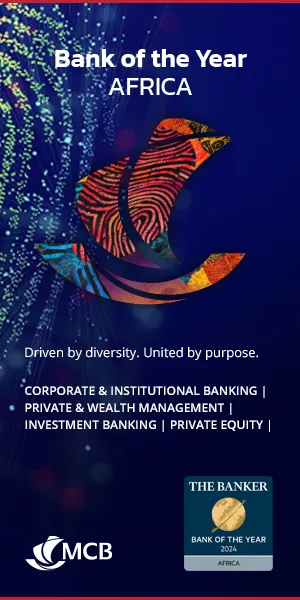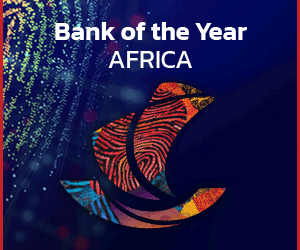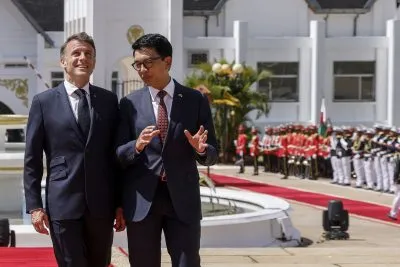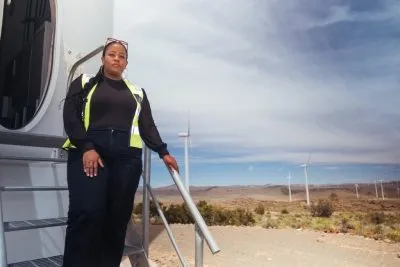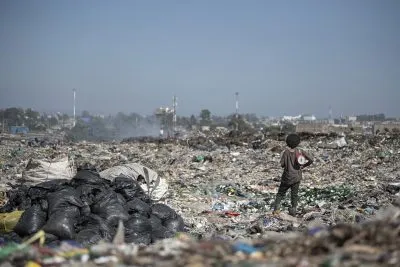North Africa is a perennial laggard in terms of cross-border projects, and West Africa’s power pool is also experiencing delays, but other parts of Africa are showing genuine progress. Neil Ford reports on cross-border transmission projects across Africa
Transmission sector investment across most of Africa is currently focused on constructing more cross-border interconnectors between neighbouring states in order to promote international trade in electricity and eventually create genuine power pools. Progress is not always even across the continent, with North Africa a perennial laggard in terms of cross-border projects, and West Africa’s power pool also experiencing delays. But other parts of Africa are showing genuine progress in thinking beyond national borders, as the projects detailed below reveal.
North Africa
Morocco and Egypt look to Europe
The big exception to the growth of cross-border power networks on the continent is North Africa.
The differences between neighbouring governments are even more entrenched than in much of the rest of the continent and Libya’s ongoing civil conflict blocks the way for a transmission line between Cairo and the Maghreb, although Libya is nominally part of the East African Power Pool (EAPP).
Here the focus is on intercontinental links. Investment in new domestic transmission infrastructure in Morocco and Egypt in recent years has been limited to connecting new gas-fired plants and renewable energy projects to their national grids rather than in bringing electricity to previously unserved regions as both have electrification rates at or very close to 100%.
Morocco has two existing subsea transmission links, each with 700 MW capacity and now a third interconnector between the two countries with the same capacity is planned by grid operators Red Eléctrica de España (REE) and Morocco’s Office National de l’Électricité et de l’Eau Potable.
The existing lines were mainly used to export Spanish electricity to Morocco but the direction of trade changed last year after the Safi coal-fired plant was completed and it seems accepted by both sides that the new line will mainly be used to export Moroccan electricity as more solar PV and concentrated solar power capacity is developed in North Africa. The relatively low construction cost of €150m ($167m) means that it seems only a question of time before it is developed.
At present, the two Morocco-Spain links – the second of which was only completed four years ago – are the only transmission lines connecting Africa with Europe but Rabat is also in talks with Portugal over developing a fourth interconnector with Iberia.
However, the governments of Tunisia and Italy have held talks on and off over the past five years to develop the 600 MW Elmed interconnector between the Tunisian coast and Sicily, to export Italian power to Tunisia in the first instance.
Greek options for Egypt
At the opposite end of North Africa, Egypt signed preliminary agreements last year to build an interconnector under the Mediterranean with Cyprus and Greece. At 2 GW, this would be a much higher capacity line than any of the Morocco-Spain interconnectors. However, while the latter are only about 30km long, the proposed EuroAfrica Interconnector would stretch 1,707km from Damietta in Egypt to Cyprus, to Crete and on to Attica in mainland Greece. The Attica-Crete phase is to be developed first. By far the longest section is the 879km west-east stretch between Cyprus and Crete. A separate line, called the EuroAsia Interconnector, will run from Cyprus to Israel.
Attention will be focused on how quickly the project can be completed and whether it triggers the development of more solar power projects in the Egyptian desert. However, Egypt may be less well placed to become a big power supplier to Europe because of transmission losses between its territory and the European markets. The countries of the Maghreb are all better geographically placed.
However, North African eyes are not entirely pointed at Europe. The 220 kV Egypt-Sudan transmission line was completed in April. It has an initial rated capacity of just 70 MW but this will be ramped up to 300 MW when required. Cairo could achieve its ambition of becoming a major power trading hub between Europe and Africa if it were prepared to work alongside Ethiopia, rather than opposing Addis Ababa’s massive hydro building programme but that could be a political step too far.
West Africa
Cross-border problems delay WAPP
The West African Power Pool (WAPP) was founded in 1999 with the aim of connecting all countries of the Economic Community of West African States (Ecowas) together to enable power trading and balance out local shortages caused by low hydro production or a lack of gas feedstock in one area. Some of the required links have been developed but other projects have been repeatedly delayed.
Idris Mohammad, special adviser to the Nigerian Federal Minister of Power, said that the main reason the WAPP has been slow to register results is the fact that member states have been slow to concede sovereignty and there have been big cross-border problems between Anglophone and Francophone states.
The lack of trust between neighbouring states was underlined last year when it was reported that Nigeria had threatened to cut power exports to Benin, Togo and Niger because of unpaid bills. Part of the outstanding sums have now been paid but such disagreements discourage cooperation at a time when Nigerian Minister of Power Saleh Mamman hopes to secure agreements on the export of power from the planned Mambilla hydro plant to neighbouring states.
Meanwhile, the Transmission Company of Nigeria intends to build lines to connect Jigawa, Kano and Katsina states. An MoU on the investment has been signed but land acquisition compensation still has to be agreed.
Ghana’s domestic projects take priority
Transmission improvements can often be overlooked by governments because high-profile generation projects can attract greater political capital but are just as vital to ensuring power supplies. However, Ghana is unable to make the most of its installed generating capacity, so Ghana Grid Company Limited (GRIDCo) is eager to extend the grid to allow more Ghanaians to make the most of the available capacity. In January, Siemens signed a memorandum of understanding with GRIDCo to strengthen the Ghanaian grid. Siemens CEO Joe Kaeser said: “As Ghana has significantly invested into generation capacity, there is now an urgent need to build a reliable, affordable and sustainable electrical network for the country and its people.”
One of the country’s biggest power producers, the Volta River Authority (VRA), is keen to export power to Mali, in addition to its existing limited supplies to Togo and Côte d’Ivoire. VRA CEO Emmanuel Antwi-Darkwa said that the WAPP needed to become a reality if Ghana was to become a bigger and more consistent power exporter. He hopes that a cross-border link with Mali will also give Ghana access to the Senegalese and Guinean markets.
East Africa
Grid links progress in East Africa
Kenya has been improving its transmission grid in preparation for the influx of Ethiopian hydroelectricity. Most recently, in November, China Aerospace Construction Group began work on building the 400kV Konza-Isinya power line to supply electricity to Konza City, about 60km from Nairobi, where the government hopes to oversee the emergence of a smart city. The line will form part of the Kenya Electricity Transmission Company (Ketraco)-operated grid.
Work on the 414km Kenya-Tanzania interconnector began in 2017 and reached the halfway mark in mid-2019, which suggests that it could be behind schedule for completion by the end of this year. However, the fact that work is progressing is to be welcomed after construction was delayed for more than a decade in the absence of the required funding. The AfDB and the Japanese International Cooperation Agency eventually agreed to provide Tanzania Electric Supply Company (Tanesco) with a $258.82m loan to allow contractor Bouygues Energies & Services to start work.
The Singida-Arusha-Namanga line should reduce power tariffs in Tanzania and possibly also Kenya, while reducing power rationing in both countries. It will also allow trade in electricity across a wide swath of Eastern and Southern Africa once both it and the Tanzania-Zambia interconnector are in place.
The governments of Tanzania and Uganda are also discussing linking their grids with a 200kV line between Masaka and Mwanza, allowing them to trade in electricity without having to go through Kenya. The plan was proposed more than a decade ago to allow Tanzania to import Ugandan hydroelectricity but Tanzanian exports seem more likely once the 2.1 GW Rufiji scheme is complete. Interconnectors with Rwanda, Burundi, Malawi and Mozambique are also under consideration. n
Ethiopia drives integration
It is difficult to avoid the impression that Ethiopia’s regional power trade ambitions have stolen the thunder of the East African Power Pool (EAPP). The Kenya-Tanzania interconnector is inching towards development, while new internal lines are being built in Kenya but the headline project in the region is the completion of the 500 kV Sodo–Moyale–Suswa transmission line to connect the Kenyan and Ethiopian grids. The line was completed in 2019 and is due to come on stream later this year once substations and other infrastructure have been tested. Funding for the scheme has been provided by a large number of organisations, including the World Bank and African Development Bank (AfDB).
The 2,000 MW capacity line will allow Ethiopia to use export revenues to help finance the construction costs of the 6 GW Grand Ethiopian Renaissance Dam (GERD), while providing Kenya with yet another source of low carbon electricity to help achieve its goal of universal electrification by 2030. The 1,045km project could not only revolutionise the power supply situation in both countries but drive power sector integration across a wide swath of Eastern Africa, as electricity could also be supplied to Uganda and Tanzania via Kenya. If successful it could encourage integration across the continent, speeding up a process that has stalled in recent years.
Ethiopia is also targeting other export markets, including Djibouti and Sudan, with preliminary talks underway over a line from Ethiopia to Saudi Arabia. Aside from reaching agreement on price, the biggest obstacle to development is the fact that the interconnector would have to pass through Yemen, which could provide a source of revenue for one of the poorest countries in the Middle East, but with huge security implications for a vulnerable, long distance line. This suggests that the project can only be developed once the war in Yemen is over. However, the long-term attraction of balancing Arabian solar power with Ethiopian hydro seems enormous.
Southern Africa
The final pieces of the SAPP jigsaw
At the time of writing, Tanzania, one of the three mainland Southern African Development Community (SADC) states still not connected to the Southern African Power Pool (SAPP) was about to join the network. The East African Power Pool (EAPP) and SAPP were due to be linked for the first time by the completion of the Tanzania-Zambia interconnector in June.
This has been long awaited and should be a monumental moment for African power sector integration but there is still a long way to go before the link is more than a useful connection between the Tanzanian and Zambian grids. The development of the EAPP is far behind schedule and regulatory agreements have to be reached before the line becomes more than a symbol of potential integration.
Meanwhile, a tender was launched in February for the contract to build a line from Tete Province in northwest Mozambique to Malawi. This will see a second unconnected SADC member join the SAPP. The line is expected to be used to export power to Malawi, where just 10% of the population has access to electricity at home.
The construction of the Angola-Namibia interconnector, which would connect Angola to the SAPP, has been proposed for many years but repeatedly delayed. However, enthusiasm for the project is likely to intensify now that the government of Namibia hopes to oversee the development of the 600 MW Baynes hydro scheme in Lower Kunene to supply both the Namibian and Angolan markets.
Angola is in the process of expanding its power generating capacity by connecting new hydro projects to parts of the country that currently have very limited access to electricity. The biggest contribution has come from the 1,998 MW Laúca hydro scheme on the Kwanza River, where the final two 333 MW turbines are due to come into operation by the end of this year.
It has been developed by Brazilian firm Odebrecht, which is also overseeing the construction of transmission lines to supply power to the provinces of Huambo and Bié in the centre of the country. More new lines are connecting the 960 MW Cambambe and 520 MW Capanda hydro projects to other underserved provinces.
South Africa’s power problems impact SAPP member states
The Southern African Power Pool (SAPP) is already by far the most effective regional power trading structure in Africa, despite the fact that three Southern Africa Development Community (SADC) member states are still not connected and there is far less regulatory integration than might be imagined.
However, the other SAPP member states are struggling to cope with South Africa’s power sector problems and Eskom’s frailty. Eskom’s stock of coal-fired generating capacity has long been the bedrock of power trading in Southern Africa, supplying a large proportion of electricity even to relatively developed and wealthy countries, such as Botswana. Yet with Eskom unable to maintain even its own domestic supplies, other countries in the region must look to their own resources and to each other, which should encourage new transmission investment, both domestic and cross-border.
Meanwhile, several long-distance lines have either been completed or are under construction in Mozambique that could support the country’s ambition of becoming a bigger power exporter to the rest of the SAPP. The 2,075 MW Cahora Bassa hydro scheme is already one of the SAPP’s lynchpins, exporting electricity to both South Africa and Zimbabwe.
The tender for the contracts to build the 400 kV Temane-Maputo transmission line was launched in April with World Bank funding. Three contracts for different stretches of the 563km line are on offer for the first $550m stage of what will become Mozambique’s transmission backbone. Running south to north, it will create a genuine national power grid.
Further north, the 110kV Cuamba-Marrupa transmission line was completed in February to carry electricity to more people in Niassa Province, while a consortium of Chinese companies has begun work on building 338km of 400 kV lines in Chibata and Dondo regions.
Case study: Pretoria stands by Inga III
In Central Africa, the proposed Inga III hydro scheme would require a network of new long-distance transmission lines. Some of the electricity would be consumed within Democratic Republic of Congo itself, mainly by mining companies. These are mostly based in the far southeast, in and around Katanga, so a new line would be required to carry power from Inga, near the mouth of the River Congo, right across the country. An even more difficult undertaking would be the planned line from Inga to South Africa, as Pretoria would like to add 2.5 GW of Inga III’s proposed 10 GW generating capacity to its generation mix.
A recent report by the US-based Congo Research Group and Phuzumoya Consulting of South Africa concluded that the project was risky and could be more expensive than other sources of power. The risk centres on financing, ensuring it is developed as planned by 2030 and particularly the transmission lines, which will pass through very remote areas and over long distances, partly through a country that has experienced many years of conflict, which could make the lines vulnerable.
Indeed, falling wind and solar power costs mean that those technologies could be cheaper than even the cheapest hydro schemes. Given the barriers in place, it is unlikely that these transmission lines will ever be needed. The 2013 South Africa-DR Congo agreement expires in 2023 if construction has not begun.
Click to see more articles from the Africa Energy Yearbook 2020
Want to continue reading? Subscribe today.
You've read all your free articles for this month! Subscribe now to enjoy full access to our content.
Digital Monthly
£8.00 / month
Receive full unlimited access to our articles, opinions, podcasts and more.
Digital Yearly
£70.00 / year
Our best value offer - save £26 and gain access to all of our digital content for an entire year!

 Sign in with Google
Sign in with Google 